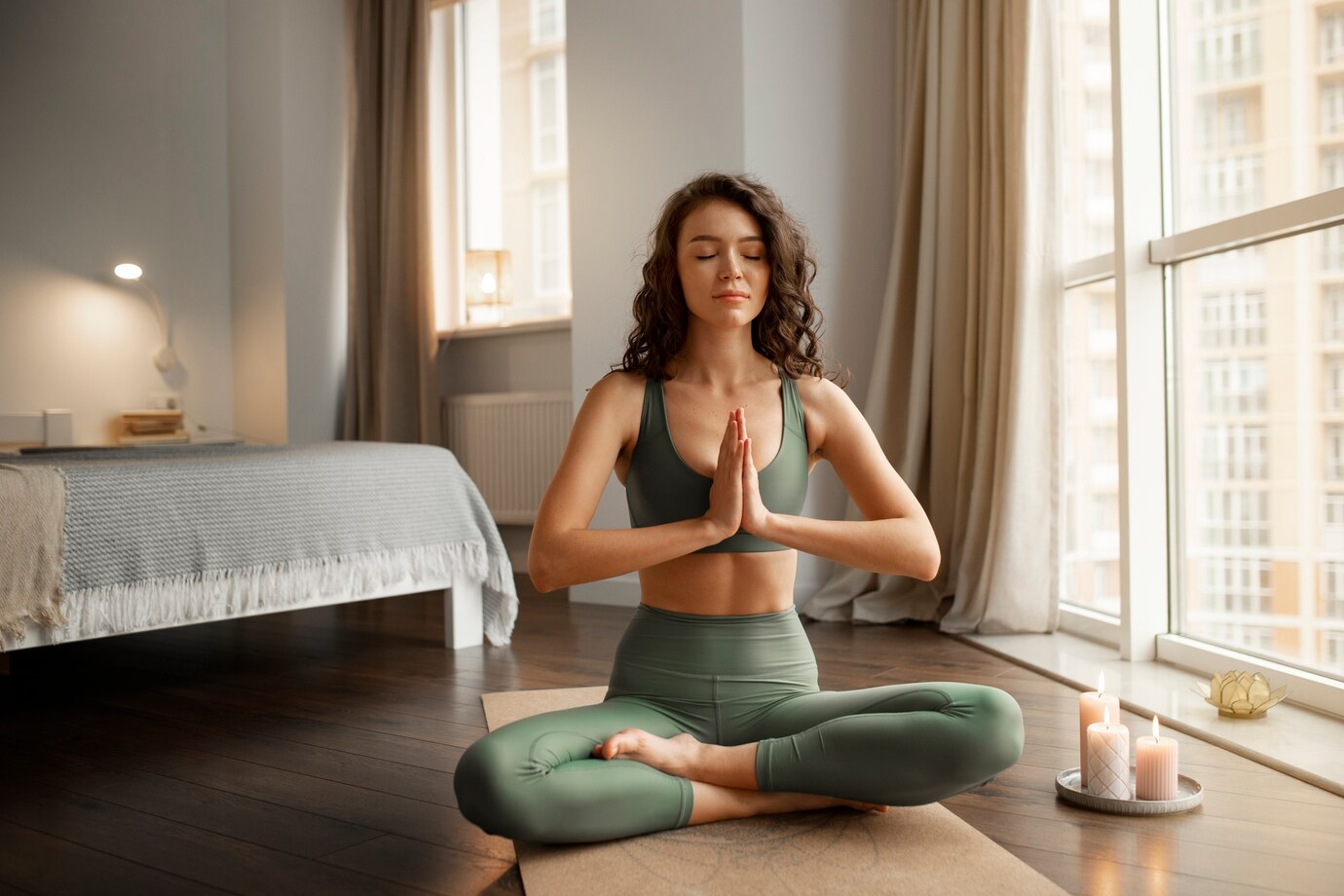Sometimes finding balance and peace of mind can seem like an overwhelming task. With the constant demands of work, family, and personal responsibilities, it’s easy to feel exhausted and disconnected. Yoga offers a way to restore balance by harmonizing the mind, body, and spirit, helping us feel more centered and peaceful.
In this article, we’ll explore practical yoga techniques designed to help you find balance in your daily life. No matter if you’re new to yoga or have been practicing for years, these ideas can help you feel more calm and balanced.
The Importance of Balance in Yoga
Yoga, derived from the Sanskrit word “yuj,” means to unite or join. This union is the essence of balance—harmonizing the physical, mental, and spiritual aspects of life. It’s a practice that teaches us to align our internal energies with the world around us, creating a sense of wholeness and stability.
Achieving this equilibrium allows us to:
- Navigate life’s challenges with grace and resilience.
- Cultivate a deeper connection with ourselves and our surroundings.
- Foster physical health, mental clarity, and emotional stability.
Beyond the mat, yoga’s philosophy of balance extends into our daily lives, encouraging us to approach situations with mindfulness and adaptability. Through consistent practice, yoga becomes more than exercise; it’s a way of life that empowers us to thrive amidst the demands of modern living.

Techniques to Cultivate Balance
1. Physical Balance: The Foundation of Stability
Physical balance poses, or asanas, help strengthen muscles, improve posture, and enhance focus. Incorporating balance-focused poses into your routine builds a foundation for steadiness both on and off the mat. These poses are not just physical exercises but also mental practices that require concentration and awareness.
Key Poses for Physical Balance:
- Tree Pose (Vrikshasana): This pose strengthens the legs and core while enhancing focus and stability. Stand tall, place one foot on the opposite thigh, and bring your hands together in front of your chest. To deepen the pose, try raising your arms overhead or closing your eyes.
- Warrior III (Virabhadrasana III): Engaging the entire body, this pose helps maintain alignment and control. From a standing position, hinge forward at the hips while lifting one leg straight back and extending your arms forward. Focus on maintaining a straight line from head to heel.
- Eagle Pose (Garudasana): This posture challenges coordination and flexibility while building strength. Cross one leg over the other and intertwine your arms, maintaining focus on a single point. Deep breathing helps with balance.


2. Mental Balance: Calming the Mind
Mental balance is just as important as physical stability. A scattered mind leads to stress, burnout, and inefficiency, but yoga offers tools to quiet the noise and bring clarity. By integrating breathwork and meditation, you can center your thoughts and cultivate a calm mind.
Techniques for Mental Balance:
- Pranayama (Breath Control): Practices like alternate nostril breathing (Nadi Shodhana) calm the nervous system and reduce anxiety. Sit comfortably, close one nostril, inhale deeply, and exhale through the other. Repeat this cycle to feel grounded and refreshed.
- Meditation: Incorporate mindfulness meditation into your routine by focusing on your breath or repeating a mantra. Even five to ten minutes a day can enhance mental focus, reduce stress, and improve overall clarity.
- Savasana (Corpse Pose): Often overlooked, this restorative pose allows the mind and body to fully relax. Lie flat on your back, arms at your sides, and focus on releasing tension with each breath. It’s a simple yet profound way to reset your mental state.
3. Emotional Balance: Aligning Heart and Mind
Emotional balance fosters resilience and inner peace, helping us respond to life’s challenges with compassion and understanding. Yoga supports emotional stability by releasing stored tension and promoting self-awareness. Practicing emotional balance through yoga strengthens your ability to maintain equanimity even in difficult situations.
Practices for Emotional Balance:
- Heart-Opening Poses: Postures like Camel Pose (Ustrasana) and Bridge Pose (Setu Bandhasana) release emotional blockages and foster a sense of openness. These poses encourage you to connect with your inner feelings and embrace vulnerability.
- Journaling After Yoga: Reflecting on your practice through journaling can provide insights into your emotional state and promote healing. Write down how certain poses made you feel and what thoughts emerged during your practice.
- Gratitude Practice: End your session by focusing on three things you’re grateful for, reinforcing positive emotions and cultivating a more optimistic outlook.


Creating a Balanced Yoga Routine
To cultivate balance, design a yoga practice that addresses physical, mental, and emotional aspects. A well-rounded routine incorporates elements that nurture the body, mind, and spirit. Here’s a simple routine to get started:
- Warm-Up: Begin with gentle stretches like Cat-Cow Pose (Marjaryasana-Bitilasana) to awaken the spine and prepare the body. Add shoulder rolls and neck stretches to release tension.
- Physical Balance Poses: Incorporate Tree Pose and Warrior III for stability and strength. Focus on steady breathing to enhance concentration.
- Pranayama: Practice alternate nostril breathing to calm the mind and prepare for meditation.
- Heart-Opening Poses: Include Camel Pose to release emotional tension and foster openness. Bridge Pose can complement this by strengthening the back and enhancing flexibility.
- Meditation and Savasana: Conclude your practice with a brief meditation followed by Savasana for deep relaxation. Allow yourself to integrate the benefits of your session fully.
Consistency is key. Practicing even a short routine regularly can make a profound difference in your overall balance and well-being.
Final Thoughts
Balance is not a destination; it’s a journey of continuous adjustment and self-discovery. Yoga provides the tools to navigate this journey with grace, offering a sanctuary of stability in an ever-changing world. It reminds us that balance is about embracing imperfection and finding steadiness amidst life’s natural ebb and flow.
By integrating these techniques into your life, you’ll find yourself more connected, resilient, and at peace. Take a moment today to step onto your mat, breathe deeply, and begin the process of finding your unique balance.

